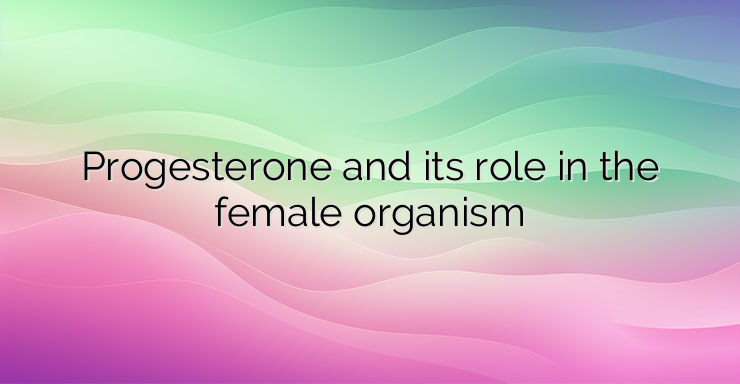Progesterone is a hormone that is released by the corpus luteum in the ovary. It plays an important role in the menstrual cycle and maintaining the early stages of pregnancy. Progesterone belongs to a group of steroid hormones called ‘progestogens’ (which are hormones that have an action similar to the natural hormone progesterone). Synthetic hormones that act like progesterone are called ‘progestins’. Progesterone is mainly secreted by the corpus luteum in the ovary during the second half of the menstrual cycle. It plays an important role in the menstrual cycle and maintaining the early stages of pregnancy. During the menstrual cycle, when the egg is released from the ovary at ovulation (around day 14), the remnants of the ovarian follicle that encloses the developing egg form a structure called the corpus luteum. This releases progesterone and to a lesser extent estradiol. Progesterone prepares the body for pregnancy in case the released egg is fertilized. If the egg is not fertilized, the corpus luteum is destroyed, progesterone production decreases and a new menstrual cycle begins. If the egg is fertilized, progesterone stimulates the growth of blood vessels that supply the lining of the uterus (the endometrium) and stimulates glands in the endometrium to secrete nutrients that nourish the early embryo. Progesterone then prepares the lining tissue of the uterus to allow the fertilized egg to implant and helps maintain the endometrium throughout pregnancy. During the early stages of pregnancy, progesterone is still produced by the corpus luteum and is essential for maintaining the pregnancy and establishing the placenta. Once the placenta is established, it takes over progesterone production around 8-12 weeks into pregnancy, known as the ‘luteo-placental shift’. During pregnancy, progesterone plays an important role in the development of the fetus (it stimulates the growth of the mother’s breast tissue, prevents lactation and strengthens the muscles of the pelvic wall in preparation for childbirth). The level of progesterone in the body continuously increases during pregnancy until labor occurs and the baby is born. Although the corpus luteum in the ovaries is the main site of progesterone production in humans, progesterone is also produced in smaller amounts by the ovaries themselves, the adrenal glands and, during pregnancy, the placenta. The formation of the corpus luteum is triggered by an increase in the production of luteinizing hormone from the anterior lobe of the pituitary gland. This usually occurs around day 14 of the menstrual cycle and stimulates the release of an egg from the ovary and the formation of the corpus luteum from the remainder of the follicle. The corpus luteum then releases progesterone, which prepares the body for pregnancy. If the egg is not fertilized and an embryo is not conceived, the corpus luteum breaks down and progesterone production decreases.As the lining of the uterus is no longer supported by progesterone from the corpus luteum, it breaks away and menstrual bleeding occurs, marking the start of a new menstrual cycle. However, if the ovulated egg is fertilized and gives rise to an embryo, the cells that surround this early embryo (which are destined to form the placenta) will secrete human chorionic gonadotropin. This hormone has a very similar chemical structure to luteinizing hormone. This means that it can bind to and activate the same receptors as luteinizing hormone, meaning that the corpus luteum does not break down and instead continues to produce progesterone until the placenta settles. References: 1. Goletiani NV, Keith DR, Gorsky SJ. Progesterone: review of safety for clinical studies. 2. Deligdisch L. Hormonal pathology of the endometrium.


Leave a Reply